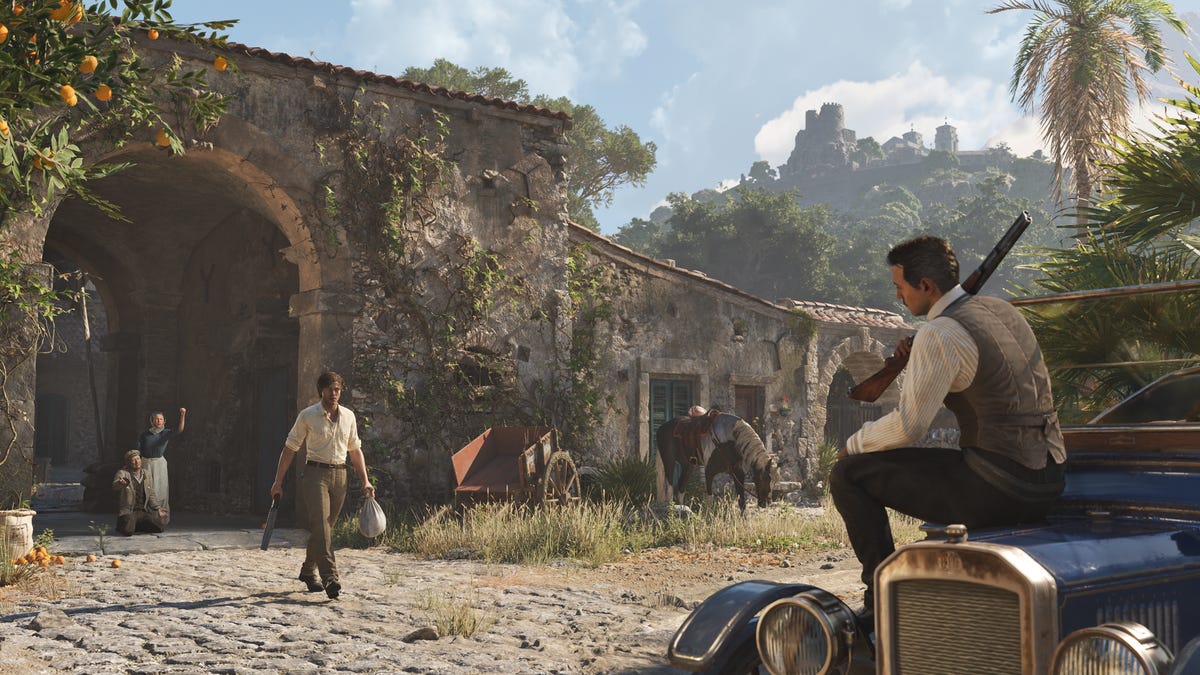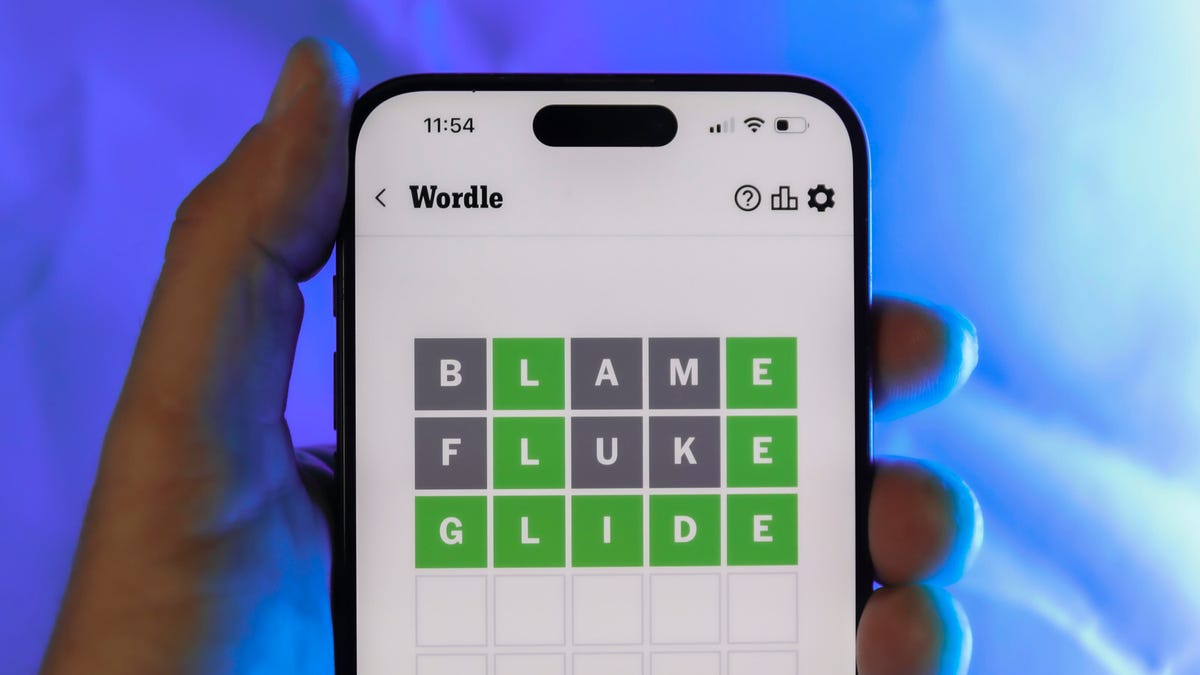Technologies
Mafia: The Old Country Is a Restrictive Crime Drama That Falls Short
The Mafia comeback? Fuggedaboudit.

Mafia: The Old Country, from developer Hangar 13, is the fourth entry in the Mafia franchise, which started in 2002. The open-world game series, mainly focusing on the Italian mafia’s organized criminal activities in fictional US cities, came out less than a year after Grand Theft Auto III, which firmly established the open-world style of gaming.
While the Mafia games didn’t have the mayhem of GTA, what they offered instead was a compelling storyline that kept you glued to your controller. Mafia: The Old Country, however, doesn’t have that or much else, as the game lacks so much of the substance in its big, open world that made previous games so rich and enjoyable.
In The Old Country, players step into the role of Enzo, a young man who was sold to a sulfur mine in Sicily by his father to pay off his debts in 1904. Establishing the game in Italy is a departure for the series, which had previously followed mob classics like The Godfather in setting its stories in America with the fictional cities Lost Haven and Empire Bay as stand-ins for Chicago and New York City. It’s a promising start, but the game’s smaller scale — its $50 pricetag suggests a more limited scope than the $70 and even $80 AAA games launching these days — becomes apparent as the game progresses.
After a collapse of the mine nearly cost him his life, Enzo escapes to a nearby vineyard owned by Don Torrisi, one of the heads of the local mafia families. The Don takes in Enzo, not because he has a compassionate heart, but the need for muscle: men from a rival family have been trespassing on his land, showing a lack of respect.
Enzo starts off as one of the hired hands on the vineyard but falls deeper into the criminal underworld as the Don gives him more and more important tasks. Each chapter plays out a certain important event over the course of four years as Enzo becomes part of the Torrisi family. There is even an initiation ceremony into the family that is similar to the one depicted in other mafia films and shows like The Sopranos.
The Old Country is intended to be somewhat accurate to the time period, but not so realistic that it drags down the fun. In every chapter, Enzo has to complete some tasks that usually involve a bit of driving or riding a horse somewhere, a stealth sequence, some sort of firefight, and a very dramatic knife fight that becomes formulaic. Ultimately, the game feels just so restrictive in its reliance on scripted story beats that abandon the freeform nature of earlier Mafia games.
More scripted than The Godfather Trilogy
One of my biggest gripes about Mafia: The Old Country is how scripted it is. There is just no semblance of freedom within the game, dictating specific experiences with the illusion of chance and randomness.
For example, over the course of the game, Enzo has to compete in two races: one with a horse and the other in a car. In both cases, I screwed up early on in the competition and lagged far behind, but I progressed against the other racers with some sharp turns and not-so-legal tactics like bumping my horse into other riders. Thing is, once I passed another racer, it seemed like the game went ahead and stopped having that racer try, so I didn’t really need much reason to check my tail to see if the guy I passed up was going to catch up to me because they seemed to just stop bothering.
The same goes for the enemies in shootouts. They get behind some cover, and some will, for whatever reason, just walk right to you while shooting. There is no sense of urgency or concern when they get shot; they’re just scripted to move forward. It’s just constant through missions, where once you reach a certain point, the sequence changes on a dime with no hint of a natural transition from playing stealthy to having a firefight.
Where this was really baffling was in the areas of San Celeste where the townspeople gathered. If you’re thinking about doing some typical GTA-like mayhem, well, you can forget about it. In these areas, you can’t pull a gun, which is fine, but on the outskirts of these areas, you can. There is a bit of a failsafe that you can’t shoot at the people, although some may react when you pull a gun out and point it at them. You can, however, throw a grenade, and the grenade doesn’t do a damn thing. No injuries, no one running around, no reaction, nothing. The townspeople just stick to their script, and that’s it.
It’s just a shame how closed off this game feels. You have all the tools to really have some fun and engage with the fantasy of being a criminal in a nearly lawless land, and the developers did pretty much everything possible to make sure you don’t go off-script.
Whacked by the frame rate
The presentation for The Old Country has its share of issues for me. To start, I was provided with a PC code, which isn’t my preferred platform to game on, and for the exact issue I came across.
My desktop isn’t top of the line with its GeForce RTX 3060 and Ryzen 5 3600, but it handles the newest games fine enough, and for whatever reason, I was getting constant slowdown going in and out of sequences. When I first booted up the game, it automatically set my graphics settings between mid and high, which is typical for most games, and I dealt with laggy transitions from an action sequence into a cutscene and vice versa. The Old Country does require a fair amount of power, but I never had my PC chug along this much for a new game, which makes me hope that this will be fixed in a day-one optimization patch.
Another issue in the presentation was the sound editing. The voice actors did a great job in bringing their characters to life. In particular, Don Torrisi, played by Jonny Santiago, was just a thrill. As soon as Torrisi was introduced, I already felt that charisma that someone who runs a crime family would have, and when he gets pissed, you can feel it in your bones.
However, in between some fine voice acting, there were some noticeable moments when I could tell that the sound editing didn’t give that natural spacing you’d expect when two people are talking. There were also moments when you could hear that maybe they didn’t use the best take of the line reading.
The graphics are, for a lack of a better word, fine. The character models were detailed, but not to an exceptional degree. The same could be said for the part of Sicily the game takes place. I just didn’t see that one spot that had me wanting to stop everything and take a look at the land around, which is a shame given the shift from American cities to the sprawling Italian countryside.
Another bright spot was the score. It was filled with different pieces that felt authentic for the time period — symphonic strings and other classical Italian fare — yet also dramatic and really added to those tense moments.
He pulls a knife, you pull a knife, that’s the San Celeste way
Combat in Mafia, for the most part, is fairly standard for a third-person open-world action game that takes place in the early 1900s. It’s a lot of shooting with revolvers, shotguns and rifles, with them having different stopping power, ammo capacity and accuracy. What’s unique in this game is the knives.
The array of blades available to the player is quite extensive, more so than the guns, and they play a big part in the game beyond combat. During the stealth sequences, Enzo uses a knife to immediately kill enemies instead of mashing a button to choke them out. There is a group of knives that he can throw to take out enemies from a distance. The blade can lose its sharpness as it’s being used to open locks on doors and lockboxes, as well as killing people, so there are some knives with increased durability, which can be reset whenever you pick up a whetstone that enemies will just happen to have on them.
Where the knife really comes into play are the one-on-one fights. These tend to be duels that close out a whole combat sequence and, toward the end of the game, involve more prominent characters. These fights are dramatic but nothing exceptional, satisfying a story beat but not thrilling in gameplay.
For these dramatic encounters, Enzo and his enemy have their own life bar and need to slice each other up with slashes, a thrust attack to reach farther-away enemies, a power attack to break through the defenses of a blocking enemy, and a dodge and parry. If you haven’t figured it out yet, this is just paper-rock-scissors, but you know, with knives — which is fine if predictable. There are no quicktime events during the fights, just occasional breaks where Enzo and his opponent tussle around some more before it goes back into duel mode. It’s all, once again, by the script, and while they can be quite dramatic, it’s simply not particularly special. Maybe there were a lot of knife fights in the early days of the mafia, I have no idea, I’m not a mafia historian, but this feels like it was intended to give the combat some flair. The game takes place in the 1900s, so there are no machine guns, rocket launchers or flamethrowers, and the developers thought that giving these very dramatic sequences could help add to both the historical realism of the time while keeping it exciting.
If that’s the case, that notion is The Old Country’s shortcoming. I have this beautiful landscape that is not really available to explore until you complete the game and unlock Explore mode. Once I do some venturing, I find there’s not much to see, and in some cases, the architecture makes no sense, with stairways going up to just brick walls. I meet these interesting characters who I’d like to know more about and would be willing to spend time with, but I can’t and will only see them when they’re allowed during missions.
It could be that my decades of playing open-world games since GTA III came out are leading me to expect so much more from an open-world game. Mafia is not GTA, and The Old Country does keep to the linear style of the first two games, but it’s just so limiting. While I wasn’t hoping for an RPG, a little more freedom would keep me from feeling railroaded into a single story. At least in the first Mafia game, I can get fined for speeding, while in this game, I can speed through the countryside without a worry.
I would have liked to see Mafia: The Old Country give me more to sink my teeth into. This is not about length, which comes in at around 12 to 15 hours to complete, but more about having some meat on the bone. If it’s about giving me a cinematic drama to play before me, then really give it to me instead of a very typical love story up until the last hour or so. My hopes were high for Mafia: The Old Country, and the game didn’t satisfy.
Mafia: The Old Country comes out Friday on PC, PS5 and Xbox Series X|S for $50.
Technologies
Today’s NYT Mini Crossword Answers for Wednesday, Dec. 24
Here are the answers for The New York Times Mini Crossword for Dec. 24.

Looking for the most recent Mini Crossword answer? Click here for today’s Mini Crossword hints, as well as our daily answers and hints for The New York Times Wordle, Strands, Connections and Connections: Sports Edition puzzles.
Need some help with today’s Mini Crossword? I’m Irish-American, but yet 6-Down, which involves Ireland, stumped me at first. Read on for all the answers.. And if you could use some hints and guidance for daily solving, check out our Mini Crossword tips.
If you’re looking for today’s Wordle, Connections, Connections: Sports Edition and Strands answers, you can visit CNET’s NYT puzzle hints page.
Read more: Tips and Tricks for Solving The New York Times Mini Crossword
Let’s get to those Mini Crossword clues and answers.
Mini across clues and answers
1A clue: Wordle or Boggle
Answer: GAME
5A clue: Big Newton
Answer: ISAAC
7A clue: Specialized vocabulary
Answer: LINGO
8A clue: «See you in a bit!»
Answer: LATER
9A clue: Tone of many internet comments
Answer: SNARK
Mini down clues and answers
1D clue: Sharks use them to breathe
Answer: GILLS
2D clue: From Singapore or South Korea, say
Answer: ASIAN
3D clue: Large ocean ray
Answer: MANTA
4D clue: ___ beaver
Answer: EAGER
6D clue: Second-largest city in the Republic of Ireland, after Dublin
Answer: CORK
Don’t miss any of our unbiased tech content and lab-based reviews. Add CNET as a preferred Google source.
Technologies
Quadrantids Is a Short but Sweet Meteor Shower Just After New Year’s. How to See It
This meteor shower has one of the most active peaks, but it doesn’t last for very long.

The Quadrantids has the potential to be one of the most active meteor showers of the year, and skygazers won’t have long to wait to see it. The annual shower is predicted to reach maximum intensity on Jan. 3. And with a display that can rival Perseids, Quadrantids could be worth braving the cold to see it.
Don’t miss any of our unbiased tech content and lab-based reviews. Add CNET as a preferred Google source.
The show officially begins on Dec. 28 and lasts until Jan. 12, according to the American Meteor Society. Quadrantids is scheduled to peak on Jan. 2-3, when it may produce upwards of 125 meteors per hour. This matches Perseids and other larger meteor showers on a per-hour rate, but Quadrantids also has one of the shortest peaks at just 6 hours, so it rarely produces as many meteors overall as the other big ones.
The meteor shower comes to Earth courtesy of the 2003 EH1 asteroid, which is notable because most meteor showers are fed from comets, not asteroids. Per NASA, 2003 EH1 is a near-Earth asteroid that orbits the sun once every five and a half years. Science posits that 2003 EH1 was a comet in a past life, but too many trips around the sun stripped it of its ice, leaving only its rocky core. The Earth runs through EH1’s orbital debris every January, which results in the Quadrantids meteor shower.
How and where to see Quadrantids
Quadrantids is named for the constellation where its meteors appear to originate, a point known as the radiant. This presents another oddity, as the shower originates from the constellation Quadrans Muralis. This constellation ceased to be recognized as an official constellation in the 1920s and isn’t available on most publicly accessible sky maps.
For the modern skygazer, you’ll instead need to find the Bootes and Draco constellations, both of which contain stars that were once a part of the Quadrans Muralis. Draco will be easier to find after sunset on the evening of Jan. 2, and will be just above the horizon in the northern sky. Bootes orbits around Draco, but will remain under the horizon until just after 1 a.m. local time in the northeastern sky. From that point forward, both will sit in the northeastern part of the sky until sunrise. You’ll want to point your chair in that direction and stay there to see meteors.
As the American Meteor Society notes, Quadrantids has a short but active peak, lasting around 6 hours. The peak is expected to start around 4 p.m. ET and last well into the evening. NASA predicts the meteor shower to start one day later on Jan. 3-4, so if you don’t see any on the evening of Jan. 2, try again on Jan. 3.
To get the best results, the standard space viewing tips apply. You’ll want to get as far away from the city and suburbs as possible to reduce light pollution. Since it’ll be so cold outside, dress warmly and abstain from alcoholic beverages, as they can affect your body temperature. You won’t need any binoculars or telescopes, and the reduced field of view may actually impact your ability to see meteors.
The bad news is that either way, the Quadrantids meteor shower coincides almost perfectly with January’s Wolf Moon, which also happens to be a supermoon. This will introduce quite a lot of light pollution, which will likely drown out all but the brightest meteors. So, while it may have a peak of over 100 meteors per hour, both NASA and the AMS agree that the more realistic expectation is 10 or so bright meteors per hour.
Technologies
Today’s Wordle Hints, Answer and Help for Dec. 24, #1649
Here are hints and the answer for today’s Wordle for Dec. 24, No. 1,649.

Looking for the most recent Wordle answer? Click here for today’s Wordle hints, as well as our daily answers and hints for The New York Times Mini Crossword, Connections, Connections: Sports Edition and Strands puzzles.
Today’s Wordle puzzle is a little tricky, with a double letter that could confuse players. If you need a new starter word, check out our list of which letters show up the most in English words. If you need hints and the answer, read on.
Read more: New Study Reveals Wordle’s Top 10 Toughest Words of 2025
Today’s Wordle hints
Before we show you today’s Wordle answer, we’ll give you some hints. If you don’t want a spoiler, look away now.
Wordle hint No. 1: Repeats
Today’s Wordle answer has one repeated letter.
Wordle hint No. 2: Vowels
Today’s Wordle answer has one vowel, but it’s the repeated letter, so you’ll see it twice.
Wordle hint No. 3: First letter
Today’s Wordle answer begins with S.
Wordle hint No. 4: Last letter
Today’s Wordle answer ends with L.
Wordle hint No. 5: Meaning
Today’s Wordle answer can refer to a cylindrical device upon which thread is wound.
TODAY’S WORDLE ANSWER
Today’s Wordle answer is SPOOL.
Yesterday’s Wordle answer
Yesterday’s Wordle answer, Dec. 23, No. 1648 was GLINT.
Recent Wordle answers
Dec. 19, No. 1644: MYRRH
Dec. 20, No. 1645: WHITE
Dec. 21, No. 1646: QUILT
Dec. 22, No. 1647: CONCH
Don’t miss any of our unbiased tech content and lab-based reviews. Add CNET as a preferred Google source.
-

 Technologies3 года ago
Technologies3 года agoTech Companies Need to Be Held Accountable for Security, Experts Say
-

 Technologies3 года ago
Technologies3 года agoBest Handheld Game Console in 2023
-

 Technologies3 года ago
Technologies3 года agoTighten Up Your VR Game With the Best Head Straps for Quest 2
-

 Technologies4 года ago
Technologies4 года agoBlack Friday 2021: The best deals on TVs, headphones, kitchenware, and more
-

 Technologies4 года ago
Technologies4 года agoVerum, Wickr and Threema: next generation secured messengers
-

 Technologies4 года ago
Technologies4 года agoGoogle to require vaccinations as Silicon Valley rethinks return-to-office policies
-

 Technologies4 года ago
Technologies4 года agoOlivia Harlan Dekker for Verum Messenger
-

 Technologies4 года ago
Technologies4 года agoiPhone 13 event: How to watch Apple’s big announcement tomorrow
